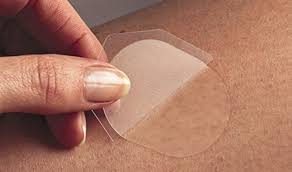Chitosan deacetylated from chitin, is a polysaccharide having β-(1, 4) glycosidic linkages and able to form intermolecular hydrogen bonds.

Functionalities
Chitosan is a natural polymer that’s safe and non-toxic. It demonstrates diverse biological properties such as being biocompatible, biodegradable, it binds to mammalian and microbial cells….

Applications
Biomedical & Pharma, e.g., tissue engineering and regeneration, drug delivery and transport facilitator, medical devices and implants, woundcare and healing, etc. Agricultural, e.g., bio-fertilizer, defensive…

- Edition 101 -
Trimethyl Chitosan: Its Charge Density and Antigen Interaction for Enhanced Vaccine Adjuvanticity
Chitin: Precursor to Chitosan Explained
Credit: SnapRevise, UK’s A-level and GCSE revision & exam preparation resource of video courses. Original video
Chitin – a polysaccharide
As well as cellulose in plants, structural polysaccharides is in many other organisms, such as exoskeletons of insects and crustaceans, such as crabs and shrimp, and fungi cell walls.
Chitin’s structure is similar to cellulose. Its composed of many β-glucose molecules joined together with 1→4 glycosidic bonds. But it differs since it also contains acetylamine groups bonded to carbon 2 of the β-glucose monosaccharide. Like in cellulose, the β-glucose molecules are inverted to form the 1→4 glycosidic bonds making chitin chains straight. These long, straight chitin chains are parallel to each other, with hydrogen bonds forming cross-links between the chains. The cross-linked chitin chains bundle together to form strong microfibrils. These microfibrils surround cells adding strength to crustacean exoskeleton and cell walls of fungi, for example.
Chitosan...
Biocompatible
Biodegradeable
Non-toxic
Antimicrobial
Cell, tissue, and mucosal adhesion
Chitosan Hydrogels

Chitosan hydrogels can provide unsurpassed flexibility and functionality in various biomedical applications.
Chemical Struture
What is chitosan’s chemical structure?
A linear polysaccharide composed of randomly distributed β-(1-4)-linked D-glucosamine (deacetylated unit) and N-acetyl-D-glucosamine (acetylated unit). Its structure is similar to cellulose, except at carbon-2, where the hydroxy group of cellulose is replaced by an amino group. Although the β-(1-4) anhydroglucosidic bond of chitosan is also present in cellulose, but with different characteristic properties.
Where does chitosan come from?
Its produced from the deacetylation of chitin (poly-(1→4)-N-acetyl-glucosamine) which is one of the most abundant natural polymers since its an essential structural component of the exoskeleton of many invertebrates (e.g., crustaceans such as shrimps and crabs) and cell walls (e.g., fungi and yeast).
Chitin is a polysaccharide, like cellulose, is characterized a β-(1-4) glycosidic bond, and can be transformed into the water-soluble chitosan following deacetylation in strong alkaline solutions.
The structure of chitosan is also similar to that of cellulose, except at carbon-2, where the hydroxy group of cellulose is replaced by an amino group. Although the β-(1-4) anhydroglucosidic bond of chitosan is also present in cellulose, the characteristic properties are not the same as cellulose.
Chitosan’s physical properties of chitosan can be tuned by changing its degree of deacetylation, molecular weight, degree of depolymerization, and by modifying the interactions it can illicit with both hydroxyl and amine groups that are present in its molecular backbone.
Chitosan’s cationic nature is also favorable to the formation of gel particles through electrostatic interactions (1,2) with, e.g., sodium sulfate employed as a precipitant (3).
One of reasons for the interest chitin and chitosan interest is due to their high percentage of nitrogen (6.89%) compared to synthetic cellulose (1.25%). This results in making chitin and chitosan useful chelating agents.
Chitosan can also interact with hydrophobic components to result in amphiphilic particles with self-assembly and encapsulation capabilities. Interactions between chitosan and drug products can illicit pharmacological effects at target sites.
References:
Joye, I.J.; McClements, D.J. Biopolymer-based nanoparticles and microparticles: Fabrication, characterization, and application. Curr. Opin. Colloid Int. Sci. 2014, 19, 417–427. [CrossRef]
McClements, D.J. Nanoparticle- and Microparticle-Based Delivery Systems; CRC Press: Boca Raton, FL, USA, 2015. [CrossRef]
Berthold, A.; Cremer, K.; Kreuter, J. Preparation and characterization of chitosan microspheres as drug carrier for prednisolone sodium phosphate as model for anti-inflammatory drugs. J. Control. Release 1996, 39, 17–25. [CrossRef]
Functionalities
Besides its various chemical properties, chitosan demonstrates diverse biological properties which include, but not limited to the following;
1. Biocompatible:
i. Natural polymer
ii. Safe and non-toxic
iii. Biodegradable
2. Binds to mammalian and microbial cells
3. Tissue regeneration
4. Accelerates formation of osteoblasts
5. Haemostatic
6. Fungistatic
7. Bactercidal
8. Antitumor or Anticancer
9. Anticholesteremic
10. Central nervous system depressant
11. Immunoadjuvant
References:
Florence Croisier, Christine Jérôme – Chitosan-based biomaterials for tissue engineering (January 2013)
… Unique materials to repair damaged organs and tissue (August 2018). The Polymer Materials for Tissue Engineering and Transplantology Laboratory of Peter the Great St. Petersburg Polytechnic University (SPbPU) created unique polymeric materials for medical purposes that repair traumatized human organs… three-dimensional porous material made of collagen and chitosan, an analog of bone tissue. Using this material, the researchers can restore parts of bone lost as a result of trauma or illness.
Youling Yuan et al, August 2011 – Deacetylation of Chitosan: Material Characterization and in vitro Evaluation via Albumin Adsorption and Pre-Osteoblastic Cell Cultures
Emilia Szymańska, Katarzyna Winnicka – April 2015 – Stability of Chitosan—A Challenge for Pharmaceutical and Biomedical Applications
Bellich B et al May 2016 – “The Good, the Bad and the Ugly” of Chitosans
Applications
Chitosan can be a stand-alone or platform biopolymer material technology. It that can be formulated to solve problems in many application areas. Key features of chitosan which enables its versatility includes bio-compatible, non-toxic, anti-microbial, hemeostatic, and much more. Chitosan is broadly categorized into high-grade, mid-grade, and industrial as generally dictated by its purity, quality, and production and handling processes. ChitoLytic’s chitosan products are primarily suited for the high-grade and medium-grade application areas.
High-Grade Chitosan Medical Applications

Biomedical

Drug Delivery

Medical Device

Pharmaceutical

Woundcare
Medium-Grade Chitosan Food and Industrial Applications

Dietary Supplement

Food & Beverages

Agriculture

Cosmetics & Toiletries

Animal Feed Additive



